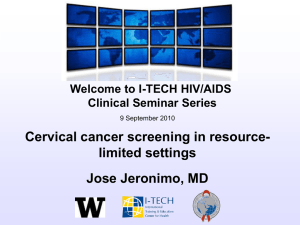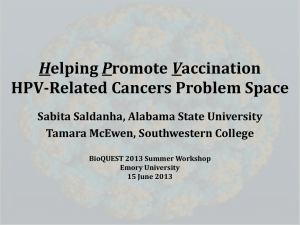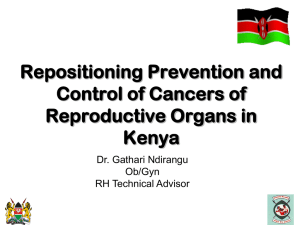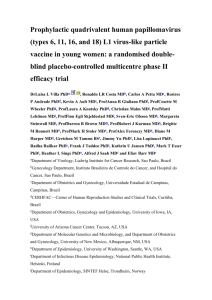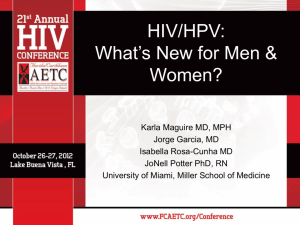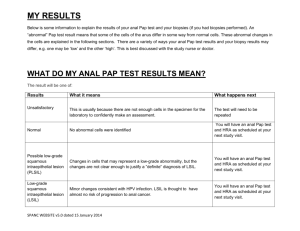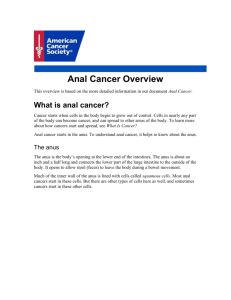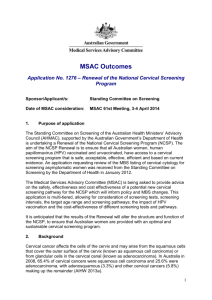Human papillomavirus infection and anal canal cell dysplasia in gay
advertisement
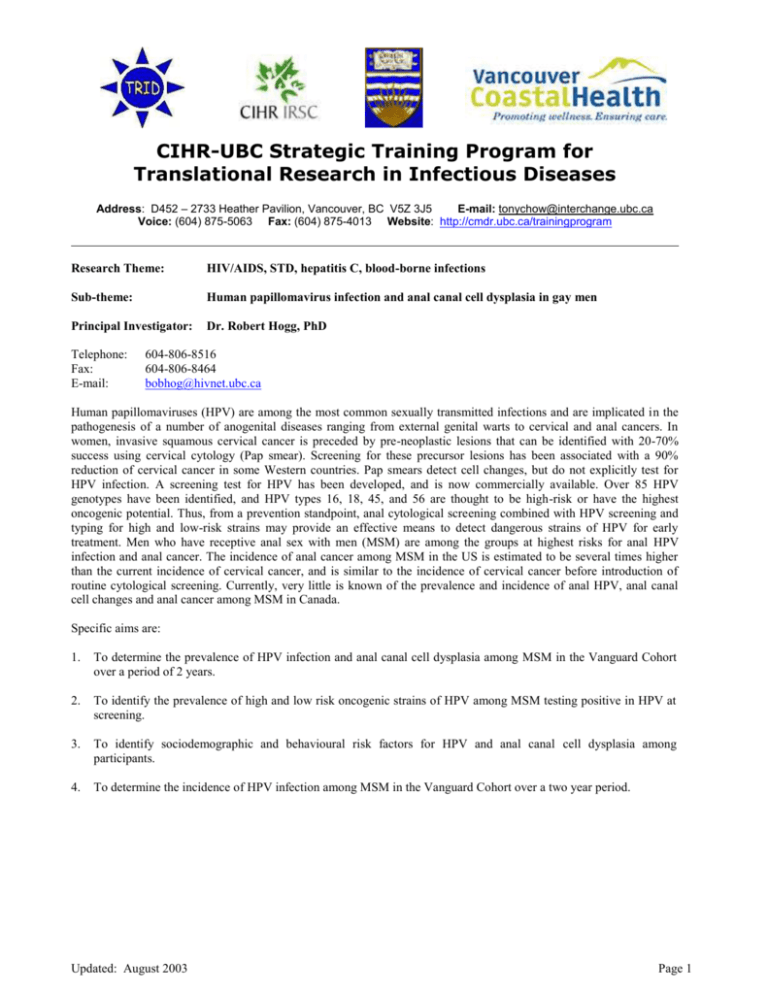
CIHR-UBC Strategic Training Program for Translational Research in Infectious Diseases Address: D452 – 2733 Heather Pavilion, Vancouver, BC V5Z 3J5 E-mail: tonychow@interchange.ubc.ca Voice: (604) 875-5063 Fax: (604) 875-4013 Website: http://cmdr.ubc.ca/trainingprogram Research Theme: HIV/AIDS, STD, hepatitis C, blood-borne infections Sub-theme: Human papillomavirus infection and anal canal cell dysplasia in gay men Principal Investigator: Dr. Robert Hogg, PhD Telephone: Fax: E-mail: 604-806-8516 604-806-8464 bobhog@hivnet.ubc.ca Human papillomaviruses (HPV) are among the most common sexually transmitted infections and are implicated in the pathogenesis of a number of anogenital diseases ranging from external genital warts to cervical and anal cancers. In women, invasive squamous cervical cancer is preceded by pre-neoplastic lesions that can be identified with 20-70% success using cervical cytology (Pap smear). Screening for these precursor lesions has been associated with a 90% reduction of cervical cancer in some Western countries. Pap smears detect cell changes, but do not explicitly test for HPV infection. A screening test for HPV has been developed, and is now commercially available. Over 85 HPV genotypes have been identified, and HPV types 16, 18, 45, and 56 are thought to be high-risk or have the highest oncogenic potential. Thus, from a prevention standpoint, anal cytological screening combined with HPV screening and typing for high and low-risk strains may provide an effective means to detect dangerous strains of HPV for early treatment. Men who have receptive anal sex with men (MSM) are among the groups at highest risks for anal HPV infection and anal cancer. The incidence of anal cancer among MSM in the US is estimated to be several times higher than the current incidence of cervical cancer, and is similar to the incidence of cervical cancer before introduction of routine cytological screening. Currently, very little is known of the prevalence and incidence of anal HPV, anal canal cell changes and anal cancer among MSM in Canada. Specific aims are: 1. To determine the prevalence of HPV infection and anal canal cell dysplasia among MSM in the Vanguard Cohort over a period of 2 years. 2. To identify the prevalence of high and low risk oncogenic strains of HPV among MSM testing positive in HPV at screening. 3. To identify sociodemographic and behavioural risk factors for HPV and anal canal cell dysplasia among participants. 4. To determine the incidence of HPV infection among MSM in the Vanguard Cohort over a two year period. Updated: August 2003 Page 1



